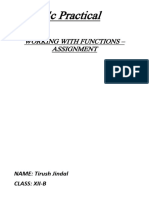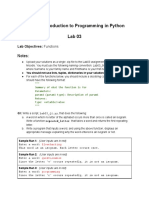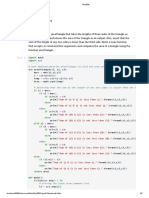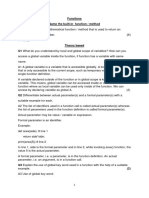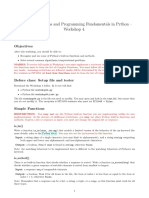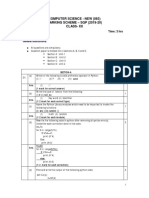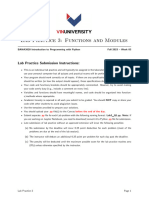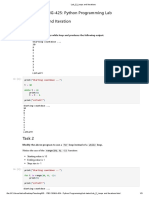0% found this document useful (0 votes)
6 views2 pagesPython Lab
The document outlines five programming tasks for a Python lab. These tasks include creating functions to draw a triangle of hashes, find the greatest of three numbers, calculate a specific series sum, compute the factorial of a number, and check if a word is a palindrome. Each task specifies the expected functionality and provides examples for clarity.
Uploaded by
modyesam25Copyright
© © All Rights Reserved
We take content rights seriously. If you suspect this is your content, claim it here.
Available Formats
Download as PDF, TXT or read online on Scribd
0% found this document useful (0 votes)
6 views2 pagesPython Lab
The document outlines five programming tasks for a Python lab. These tasks include creating functions to draw a triangle of hashes, find the greatest of three numbers, calculate a specific series sum, compute the factorial of a number, and check if a word is a palindrome. Each task specifies the expected functionality and provides examples for clarity.
Uploaded by
modyesam25Copyright
© © All Rights Reserved
We take content rights seriously. If you suspect this is your content, claim it here.
Available Formats
Download as PDF, TXT or read online on Scribd
/ 2





